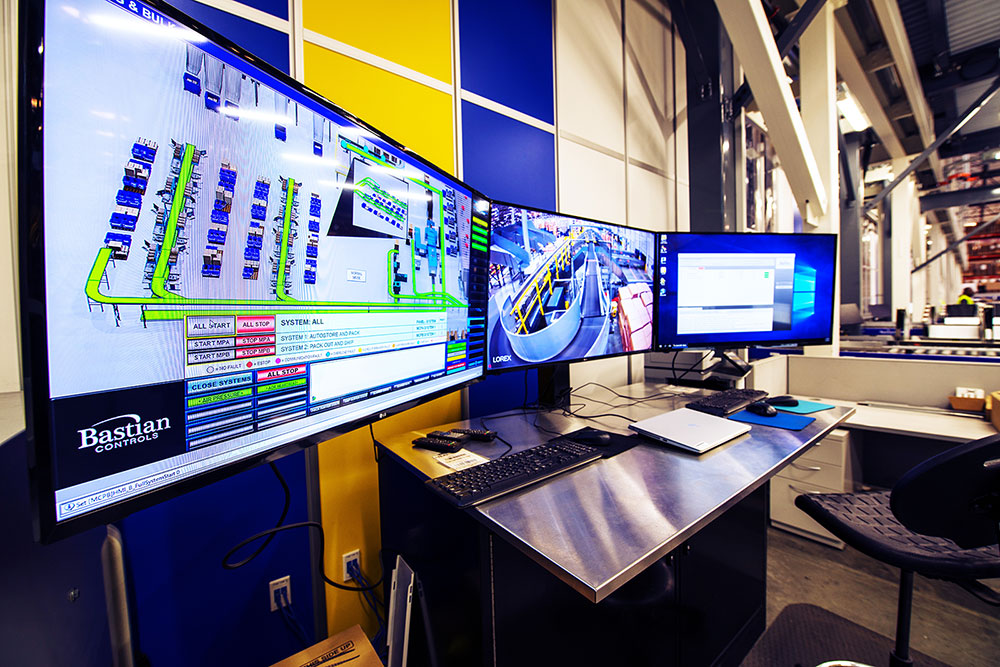
5 Essential Questions to Guide Your Warehouse Execution System (WES) Strategy
Natalie Barber | 4 June 2025
As warehouse automation becomes a strategic priority for improving efficiency, accuracy, and scalability across distribution and manufacturing environments, it is important to start with the right foundation. One of the most important steps is asking the key questions that shape a successful automation solution.
While automation projects often center on the equipment like automation storage and retrieval systems (AS/RS), goods-to-person (GTP) solutions, or automated guided vehicles (AGVs), the software that directs and synchronizes this equipment sits at the core of the solution. This is where a Warehouse Execution System (WES) comes into play.
A WES serves as the brains of the operations, coordinating flows of work to different automation equipment and working with higher-level systems like a Warehouse Management System (WMS).
Here are five essential questions every customer should explore when considering a Warehouse Execution System:
1. What systems will the WES integrate with?
Clearly defining every system's role in an automated solution is critical, especially the responsibilities between the host system versus the WES.
Is the host going to cube an order to a specific container size or is that the WES's responsibility? Is the host generating and sending cycle count orders to the WES or does the WES need to generate and schedule them?
Misalignment in these responsibilities can lead to potential functional overlap or gaps. Defining these roles early prevents delays during project implementation and ensures a smoother integration.
2. Is the operational model a push or pull system?
Is the system continuously feeding a production line (pull) or fulfilling outbound orders as they're released to the system (push)?
The WES logic needs to reflect how inventory is consumed: on demand or distributed based on order drops. These differences affect how tasks are prioritized, inventory is replenished and the overall system response time.
If the WES isn't aligned with the system's operational model, there can be potential for bottlenecks, delayed order fulfillment or starved production lines.
3. What Units of Measure will be stored and picked out of the system?
Units of Measure (UOMs) directly affect how the WES manages putaway, picking, replenishment, inventory assignment and cycle counting. A single product may be picked as an each for one order and a case for another.
Unclear UOM definitions can lead to inefficiencies such as incorrect picks or underutilized automation. Defining the UOMs upfront allows for the WES and system to be designed to accommodate the different operations required for different UOM picks.
4. What traceability requirements exist for products?
Traceability can add layers of complexity to WES logic, especially when it involves validation scanning, inventory segregation, or audits. Traceability accounts for lot, batch, expiration and serial of products.
Does the operator need to capture the serial number of every item for an order? Does inventory need to be separated by different lots? Does a specific batch need to picked for an order?
These questions are vital to designing the putaway and picking operations for an automated system. Missing this requirement can lead to non-compliance with industry regulations.
5. What are the Cycle Count Requirements?
Inventory accuracy is not just an operational priority – it's also a financial one.
Whether the system follows annual physical inventories or daily audits, the WES must support the required strategy. Accurate inventory visibility ensures order fulfillment runs smoothly. Outdated inventory records can lead to failed audits and compliance issues.
By defining the requirements for the WES before project implementation, the system is setup for operational and financial success.
Design Your WES for Success
Choosing a WES is more than selecting the software that will control the hardware – it's about choosing a system that fits the entire operational scope. By asking these five questions early, you are one step ahead towards a high performing system design.
At Bastian Solutions, we specialize in designing and implementing WES solutions that align with your unique operational needs. Our team partners with you from concept to execution, helping you navigate system integration, data flow and automation control with confidence.
As a Software Consultant for Bastian Solutions, Natalie is part of the sales team for the software division, working with prospects and customers to understand their software requirements. She has a Bachelor of Science in Industrial Engineering from the University of Missouri -- Columbia.
Comments
No comments have been posted to this Blog Post
Leave a Reply
Your email address will not be published.
Comment
Thank you for your comment.